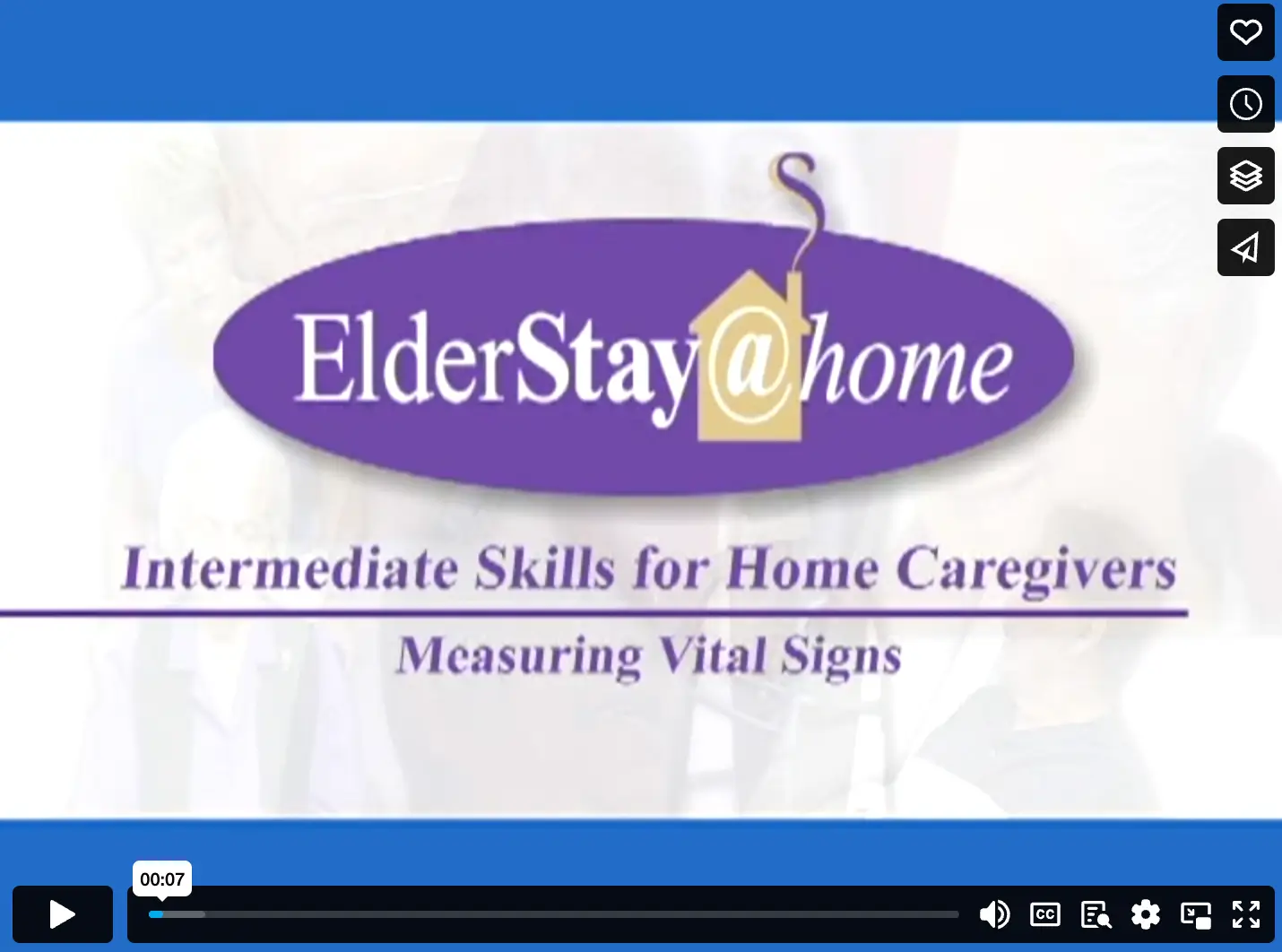Measuring Vital Signs: A Caregiver Guide to Monitoring Temperature, Pulse, and Respirations
Measuring Vital Signs: A Caregiver Guide to Monitoring Temperature, Pulse, and Respirations

Importance of Monitoring Vital Signs
For family caregivers, learning how to properly measure vital signs is an invaluable skill that can:
- Help detect early warning signs of illness
- Track responses to medications or treatments
- Provide objective data for healthcare providers
- Increase confidence in providing care
- Potentially reduce unnecessary emergency visits
Understanding what’s normal for your care recipient creates a caregiver health monitoring guide personalized to their needs.
Temperature: The Basics of Monitoring Body Heat
Body temperature is a critical indicator of overall health. Knowing how to check body temperature accurately is essential for every caregiver.
Methods of Measuring Temperature
Temperature can be measured using various devices:
- Digital oral thermometers
- Tympanic (ear) thermometers
- Temporal artery (forehead) thermometers
- Axillary (underarm) measurement
What is a Normal Temperature Range?
The average normal body temperature is 98.6°F (37°C), but normal temperature ranges can vary by individual, time of day, and measurement method:
- Oral: 97.6°F to 99.6°F (36.4°C to 37.6°C)
- Rectal: 98.6°F to 100.6°F (37.0°C to 38.1°C)
- Axillary: 96.6°F to 98.6°F (35.9°C to 37.0°C)
Tips for Accurate Measurement
For reliable readings when measuring temperature:
- Wait at least 30 minutes after eating or drinking
- Use the same method and thermometer consistently
- Follow manufacturer’s instructions carefully
- Clean the thermometer before and after use
Pulse: Understanding Heart Rate
Measuring pulse rate provides important information about heart function and overall cardiovascular health.
How to Measure Pulse
To properly check a pulse:
- Place your index and middle fingers on the wrist (radial pulse) or neck (carotid pulse)
- Count the beats for 30 seconds and multiply by 2, or count for a full minute
- Note the rhythm and strength of the pulse along with the rate
Normal Pulse Rates
Average healthy pulse rates vary by age:
- Adults: 60-100 beats per minute
- Athletes: Often lower at 40-60 beats per minute
- Older adults: Similar to adult ranges, but may be affected by medications
What Changes in Pulse Indicate
Variations in pulse can signal important health changes. Record when pulse is unusually high, low, irregular, or accompanied by other symptoms.
Respirations: Observing Breathing Patterns
How to count respirations is an often overlooked but crucial vital sign for caregivers to monitor.
To accurately count:
- Watch the rise and fall of the chest or abdomen
- Count for 30 seconds and multiply by 2, or for a full minute
- Observe without the person knowing you’re counting to avoid conscious breathing changes
Normal respiratory rates for adults range from 12-20 breaths per minute. Signs of abnormal breathing patterns that warrant medical attention include:
- Respiratory rates above 24 or below 8 breaths per minute
- Labored or difficult breathing
- Unusual sounds during breathing
- Uneven breathing patterns
Tools and Resources for Caregivers
Essential tools for monitoring vital signs at home include:
- Reliable digital thermometer
- Blood pressure monitor (if needed)
- Pulse oximeter (measures oxygen levels)
- Tracking chart or digital app
- Timer or watch with second hand
Investing in quality equipment for health monitoring makes the process easier and more accurate.
Tips for Consistent Monitoring
Create a sustainable routine for tracking vital signs for patients:
- Establish a regular schedule for checking vital signs
- Keep a dedicated checklist for tracking vital signs
- Note any medications that might affect readings
- Record readings consistently, including date and time
- Know when to seek medical help for abnormal vital signs
Remember that regular health checks are most valuable when done consistently over time, allowing you to identify meaningful changes.
When to Contact Healthcare Providers
Contact a healthcare provider if you observe:
- Fever above 101.5°F (38.6°C) in adults
- Sustained heart rate above 100 beats per minute at rest
- Respiratory rate consistently above 24 breaths per minute
- Any vital sign accompanied by pain, confusion, or distress
Trust your instincts as a caregiver—if something seems wrong, don’t hesitate to seek medical advice.
For more information, visit www.elderstayathome.com.



